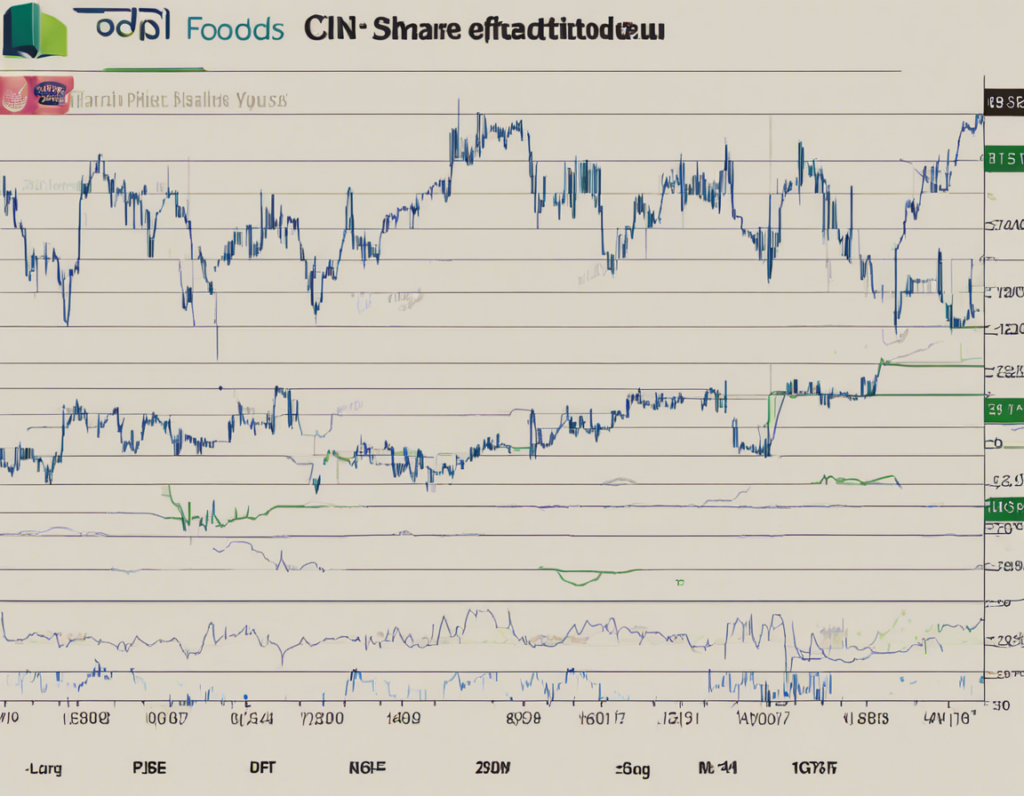Introduction
Investing in the stock market can be a lucrative way to grow your wealth over time. For individuals looking to invest in the stock market, performing detailed analysis on individual company stocks is crucial. In this article, we will delve into the LT Foods company and analyze its share price trends.
Company Overview
LT Foods, also known as Lal Qilla, is a leading Indian food company that specializes in the production and distribution of rice and rice-based products. The company has a strong presence in both domestic and international markets, catering to a diverse range of customers. LT Foods has a rich history of over four decades in the rice industry and has established itself as a trusted brand known for its quality products.
Historical Share Price Performance
One of the key aspects of analyzing a company’s stock is to investigate its historical share price performance. By looking at the company’s historical share price data, investors can gain insights into how the stock has performed over time and identify any significant trends or patterns.
For LT Foods, it is important to analyze how the company’s share price has evolved over the years. By studying the stock’s performance during both bullish and bearish market conditions, investors can assess the stock’s resilience and long-term potential.
Factors Influencing Share Price
Several factors can influence a company’s share price, and it is crucial for investors to be aware of these factors when analyzing stock performance. Some of the key factors that can impact the share price of LT Foods include:
1. Industry Trends: The overall performance of the rice industry, including factors such as demand-supply dynamics, pricing trends, and competition, can affect LT Foods’ share price.
2. Financial Performance: LT Foods’ financial performance, including revenue growth, profitability, debt levels, and cash flow, can have a significant impact on its share price.
3. Macroeconomic Factors: Economic conditions, currency fluctuations, inflation rates, and interest rates can all influence the share price of LT Foods.
4. Market Sentiment: Investor sentiment, market rumors, and macroeconomic news can also impact the share price of a company like LT Foods.
5. Competitive Landscape: The competitive environment in which LT Foods operates, including the presence of rival companies and their performance, can affect the company’s share price.
Analyzing Share Price Trends
When analyzing LT Foods’ share price trends, investors should consider both technical analysis and fundamental analysis. Technical analysis involves studying historical price movements and trading volumes to predict future price movements, while fundamental analysis focuses on evaluating a company’s financial health and business prospects.
Investors can use various technical indicators such as moving averages, relative strength index (RSI), and moving average convergence divergence (MACD) to analyze LT Foods’ share price trends. By identifying key support and resistance levels, trend reversals, and patterns, investors can make informed decisions about buying or selling the stock.
On the fundamental side, investors should assess LT Foods’ financial statements, including its income statement, balance sheet, and cash flow statement. By examining key financial metrics such as revenue growth, profitability margins, return on equity (ROE), and debt levels, investors can gauge the company’s financial health and growth potential.
Investment Considerations
Before investing in LT Foods or any other company, it is essential for investors to conduct thorough research and due diligence. Some key considerations to keep in mind when evaluating LT Foods as an investment opportunity include:
1. Growth Prospects: Assess LT Foods’ growth prospects in the rice industry, including its expansion plans, product innovation, and market penetration strategies.
2. Valuation: Evaluate LT Foods’ valuation metrics, such as price-to-earnings (P/E) ratio, price-to-sales (P/S) ratio, and price-to-book (P/B) ratio, to determine if the stock is undervalued or overvalued.
3. Risk Factors: Identify and analyze the key risk factors that could impact LT Foods’ business operations and share price, such as supply chain risks, regulatory challenges, and macroeconomic uncertainties.
4. Diversification: Consider diversifying your investment portfolio by including a mix of different asset classes, sectors, and geographies to reduce risk exposure.
Conclusion
Analyzing LT Foods’ share price trends requires a combination of technical and fundamental analysis to make informed investment decisions. By considering the company’s historical performance, key influencing factors, share price trends, and investment considerations, investors can gain valuable insights into the company’s stock and its potential for long-term growth.
Frequently Asked Questions (FAQs)
1. Is LT Foods a profitable company?
– LT Foods has maintained a strong track record of profitability over the years, driven by its solid business model and market positioning in the rice industry.
2. What are some key growth drivers for LT Foods?
– Key growth drivers for LT Foods include expanding its product portfolio, entering new markets, enhancing operational efficiencies, and leveraging technology for growth.
3. How has LT Foods’ share price performed compared to its industry peers?
– LT Foods has demonstrated competitive share price performance compared to its industry peers, reflecting the company’s strong market position and growth potential.
4. What risks should investors consider when investing in LT Foods?
– Investors should be aware of risks such as fluctuating commodity prices, changing consumer preferences, regulatory challenges, and global economic uncertainties when investing in LT Foods.
5. What is the long-term outlook for LT Foods’ share price?
– The long-term outlook for LT Foods’ share price is positive, supported by the company’s strong fundamentals, growth prospects, and market positioning in the rice industry.
